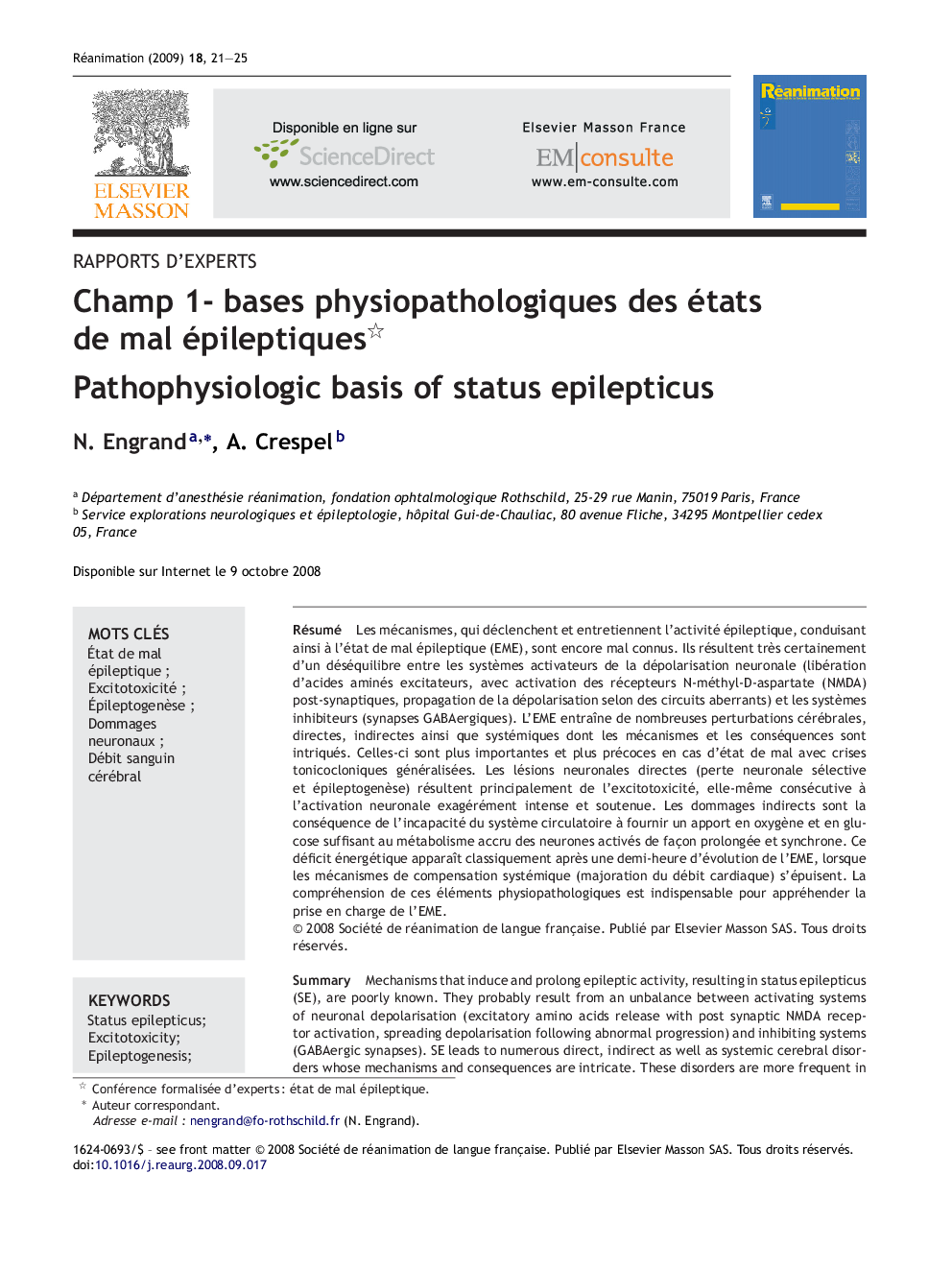| Article ID | Journal | Published Year | Pages | File Type |
|---|---|---|---|---|
| 2613662 | Réanimation | 2009 | 5 Pages |
Abstract
Mechanisms that induce and prolong epileptic activity, resulting in status epilepticus (SE), are poorly known. They probably result from an unbalance between activating systems of neuronal depolarisation (excitatory amino acids release with post synaptic NMDA receptor activation, spreading depolarisation following abnormal progression) and inhibiting systems (GABAergic synapses). SE leads to numerous direct, indirect as well as systemic cerebral disorders whose mechanisms and consequences are intricate. These disorders are more frequent in case of convulsive SE with generalized tonicoclonic seizures. Direct neuronal damage (selective neuronal loss and epileptogenesis) results mostly from excitotoxicity which arises from enhanced and extended neuronal activation. Indirect neuronal damage results from the inability of the circulatory system to supply sufficient oxygen and glucose contribution compared to the high metabolism level of the highly depolarized and synchronized neurons. This energetic deficit is usually patent after 30Â minutes of SE when systemic compensation mechanisms (cardiac output increase) are exhausted. Understanding these pathophysiologic aspects is essential to treat SE efficiently.
Keywords
Related Topics
Health Sciences
Medicine and Dentistry
Emergency Medicine
Authors
N. Engrand, A. Crespel,
